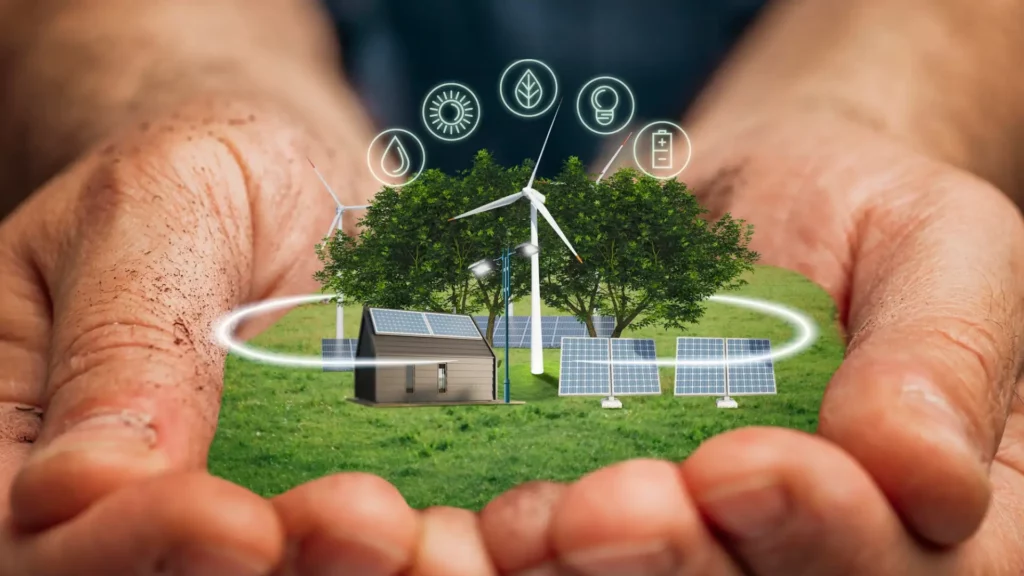If you are looking for eco friendly energy sources, you've come to the right place. Read on for information about solar power, Geothermal energy, and biomass power plants. You may also want to consider solar power, wind energy, or geothermal energy.
But which energy source is best? You can use all of these methods or any combination of them, and save the environment at the same time. These are the most eco friendly sources of energy.
Understanding Eco Friendly Energy Sources
Eco friendly energy sources, often referred to as renewable or green energy sources, are alternatives to fossil fuels that have a significantly lower environmental impact.
These sources harness the power of naturally occurring processes, ensuring a continuous supply of energy without depleting finite resources or emitting harmful greenhouse gases.

5 Types of Eco Friendly Energy Sources
Renewable energy is now cheaper than fossil fuels and coal power plants, according to IRENA's June 2020 report. The global demand for clean electricity is increasing.
The world's energy crisis is a major challenge of the 21st century. Sustainable energy, such as hydropower, geothermal energy, and solar power, is crucial.
While hydropower used to be the dominant renewable source, wind energy and biomass are becoming more important.
Renewable energy is cheaper than fossil fuels, but intermittent nature requires backup systems and grid connections, increasing costs. Government support is vital, considering carbon emission charges.
Transitioning to sustainable energy varies based on local climate and geography. Wind farms thrive in the Midwest, Texas, and offshore areas, emphasizing the need for efficient distribution.
However, the shift to sustainable energy takes time.
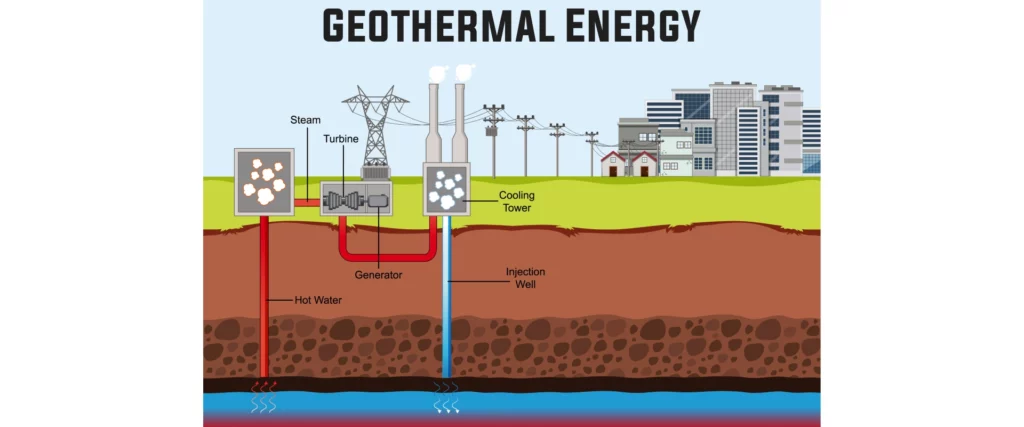
1. Geothermal Energy
The benefits of geothermal energy are obvious. Geothermal energy is an environmentally friendly option that uses the Earth's heat for heating, cooling, and hot water. It's limited to specific areas but reduces costs without sacrificing comfort.
Geothermal systems have a small environmental impact, creating little pollution and no byproducts. They involve drilling into hot bedrock to generate electricity through steam and turbines.
Although geothermal energy is less popular than solar or wind power, it is valued for its ability to produce significant amounts of clean electricity without the need for fuel or transportation.
Geothermal energy, a renewable source, offers long-term production and is a viable alternative to fossil fuels. It has minimal environmental impact and conservation requirements, making it highly attractive.
Geothermal energy projects like the New Power Complex in the Imperial Valley, USA, create jobs in rural areas. This project alone generates 323 jobs, providing environmental and economic benefits.
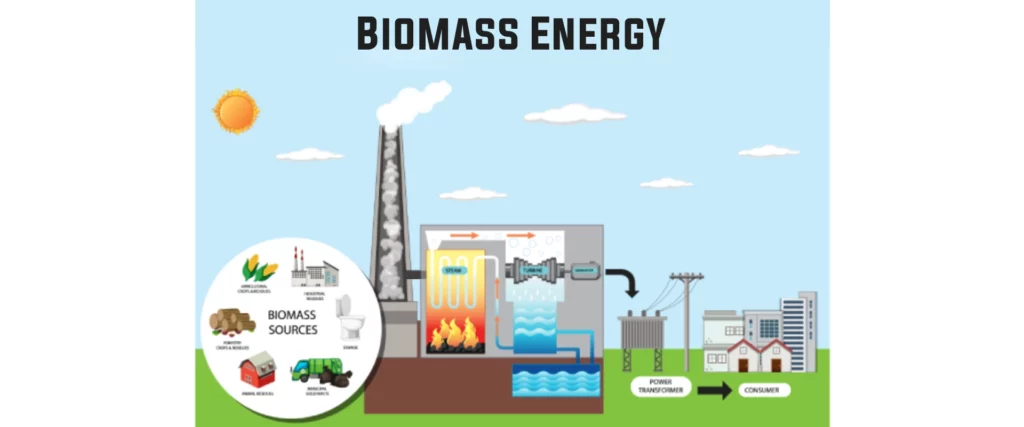
2. Biomass Energy
Biomass energy comes from organic materials like plants and animal waste. Its efficiency depends on the type and amount of biomass used.
Small-scale projects use agricultural or food waste for local energy, while larger ones involve industrial plants producing substantial power.
Biomass energy reduces reliance on fossil fuels by converting organic materials into electricity, heat, or biofuels. This can be done through combustion, gasification, or biochemical conversion.
By tapping into the chemical energy stored in organic material, biomass energy significantly reduces greenhouse gas emissions compared to fossil fuels.
A key challenge for biomass energy is sustainability and eco-friendly supply, which affects land use. Transporting biomass also adds to carbon emissions.
Advances in technology aim to improve conversion and develop local sources to reduce transportation. These solutions make biomass energy vital for a sustainable and eco-conscious energy landscape.
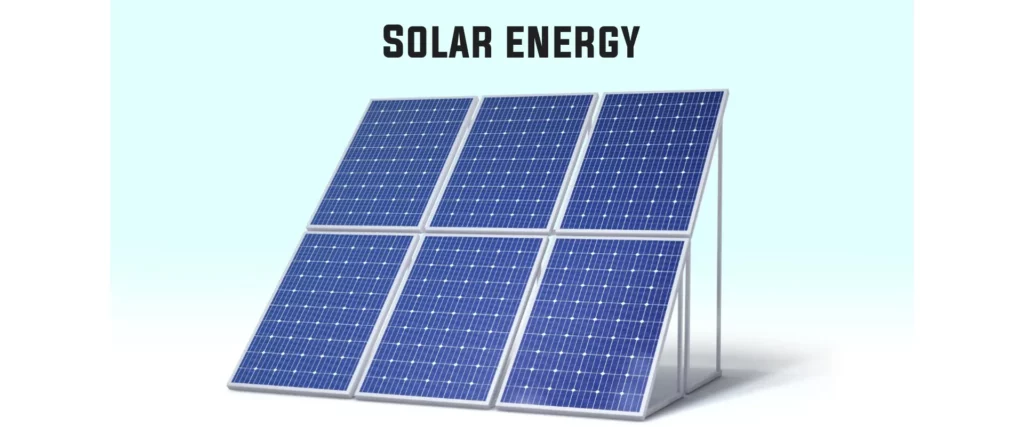
3. Solar Energy
Solar energy is a renewable energy source that can be used globally.
It helps countries become energy producers and reduces dependence on centralized grids and foreign fossil fuels through individual installations on homes.
The solar PV industry has expanded, with 580 GWe globally by 2017, including 205 GWe in China. Solar systems emit no pollutants, minimizing environmental impact.
Wind turbines convert wind to electricity, with decreasing manufacturing costs for photovoltaic cells.
Solar power can heat water and power homes, with solar farms on rooftops or water bodies like wastewater facilities. Research shows promising advancements in solar energy for a bright, clean future.
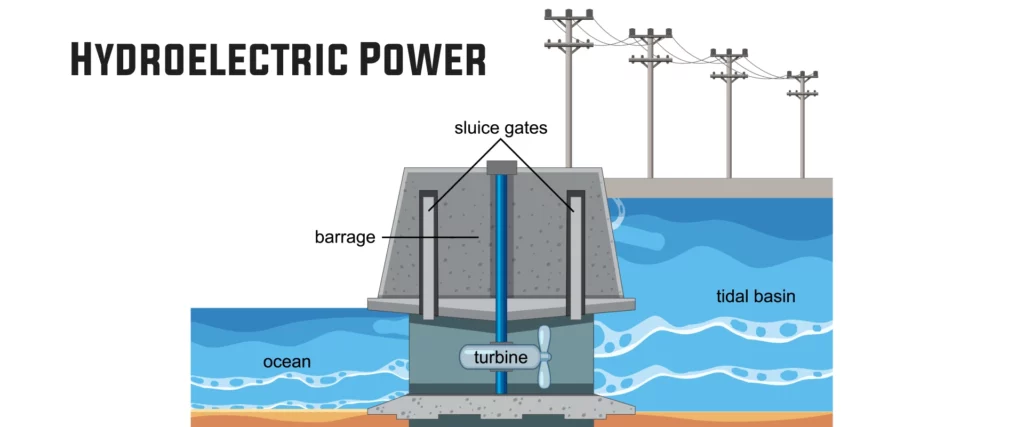
4. Hydroelectric Power
Hydroelectric power uses water flow to generate electricity, with the amount of power depending on flow rate and height.
Small systems use weirs, while larger ones use dams to control water levels.
In developing countries, hydroelectricity is an important energy source. Dams create reservoirs, channeling water through pipes to spin turbines and generate renewable, clean, and cheap energy.
China heavily relies on hydroelectric power but faces challenges due to inadequate planning.
With electricity demand concentrated in the coastal areas and hydroelectric facilities in the West, China resorts to coal imports, causing pollution.
To address this, China is building more hydroelectric stations and using ultra-high-voltage power lines, like the Yunnan-Guangdong line, to transmit electricity efficiently.
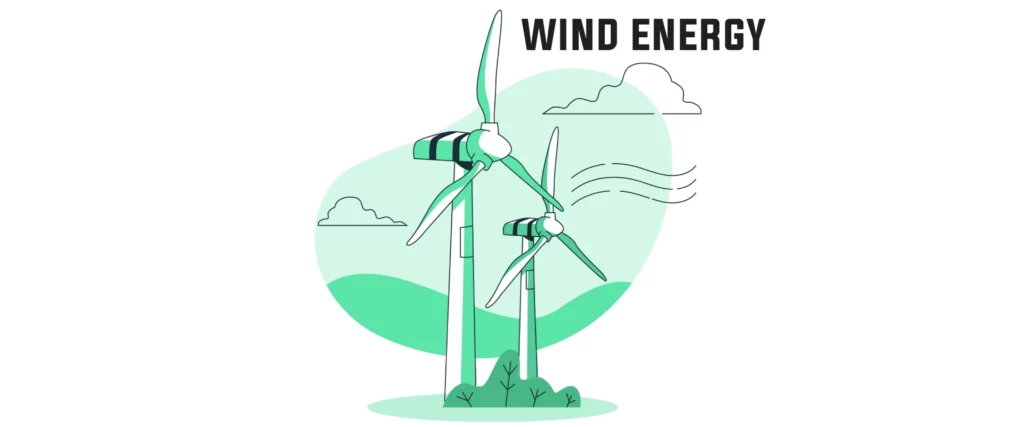
5. Wind Energy
Wind energy is a sustainable power source that uses the movement of air. It depends on wind speed and frequency.
Small-scale projects use individual turbines or small clusters, while large-scale projects use wind farms to supply power on a larger scale.
Wind energy is gaining popularity worldwide as a clean and renewable source of electricity. Through wind turbines, the kinetic energy of the wind is converted into electricity without emitting greenhouse gases.
The wind energy sector faces challenges like unpredictable wind patterns and the requirement for remote or offshore locations with strong and consistent winds.
Technological progress has improved turbine designs and energy storage solutions. Countries are also investing in infrastructure, such as high-capacity transmission lines, to distribute wind-generated electricity from remote areas to urban centers.
This enhances the viability and sustainability of wind energy in the global transition to cleaner power sources.
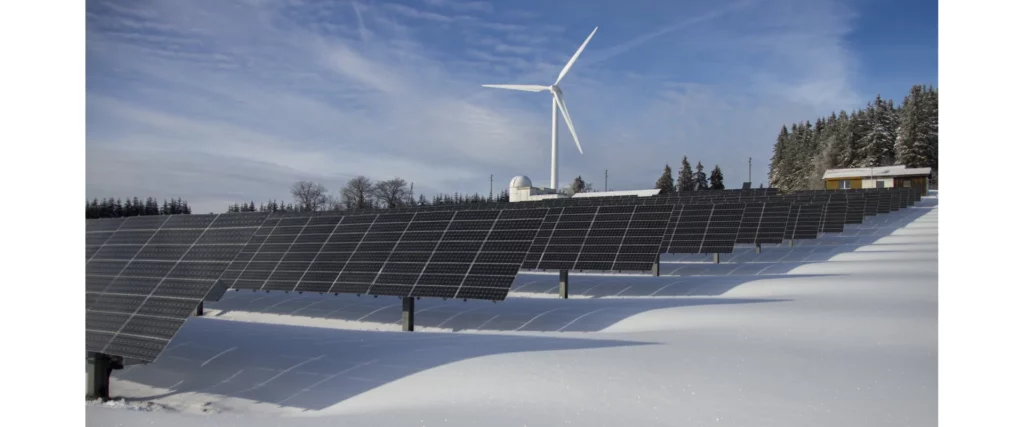
The Advantages of Eco Friendly Energy Sources
- Renewable and Sustainable: Eco friendly energy sources like solar, wind, hydroelectric, geothermal, and biomass are renewable and sustainable. Unlike finite fossil fuels, they rely on natural processes, offering a long-term and reliable energy supply.
- Reduced Greenhouse Gas Emissions: Eco friendly energy sources have minimal impact on greenhouse gas emissions, unlike fossil fuels. They produce little to no direct emissions, mitigating climate change effects.
- Clean Air and Improved Public Health: Eco friendly energy sources reduce harmful pollutants, promoting cleaner air and improving public health by lowering respiratory and cardiovascular diseases.
- Diverse Energy Portfolio: Incorporating eco-friendly energy sources diversify energy portfolio, enhancing security by reducing dependence on one source and mitigating risks of disruptions or price fluctuations.
- Job Creation and Economic Growth: Renewable energy creates jobs and economic growth. Skilled workers are needed for installing and maintaining infrastructure in urban and rural areas.
- Technological Advancements: The push for green energy fuels advancements in energy tech, driving innovation in multiple sectors and creating cutting-edge technologies with wide-ranging benefits beyond power.
- Local Energy Generation: Local eco friendly energy sources reduce long-distance transportation of energy, improving distribution, reducing losses, and enhancing resilience during emergencies.
- Reduced Water Consumption: Eco friendly energy sources like solar and wind use less water compared to fossil fuel-based power plants, conserving water resources in water-scarce regions.
- Energy Independence: By using abundant renewable energy sources, countries can become more energy independent, reduce reliance on imported fossil fuels, and enhance national security and stability.
- Long-Term Cost Savings: Investing in eco-friendly energy infrastructure may be costlier initially, but it brings long-term savings. Renewable energy has lower operating costs than fossil fuel plants, and as technology advances and economies grow, its cost decreases.
Conclusion
As I explore eco-friendly energy sources, I'm amazed by their potential and our commitment to preserving our planet.
Solar power, wind energy, geothermal and hydroelectric sources, and biomass all demonstrate our ability to collaborate with nature.
These solutions aren't just about clean energy; they envision solar panels on rooftops, wind turbines in fields, and harnessing Earth's heat.
Rivers generate energy, while biomass gives waste new purpose.
Source:
A comprehensive study of renewable energy sources: Classifications, challenges and suggestions

